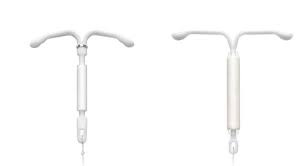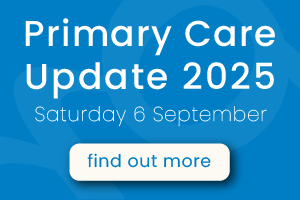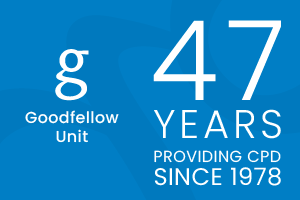This MedCase was first published in November 2020. It was updated by Dr Hazel Fuiava, MBChB, Dip Paeds, FRNZCGP.
The intra-uterine contraceptive devices (IUCDs) Jaydess® and Mirena® are long-acting reversible contraceptives (LARCs) that are fully funded by Pharmac.1
In 2019, expanded funding for LARCs was established in an effort to widen access to effective contraception.
This MedCase compares Jaydess® and Mirena® and provides guidance to help select the best option.
Miss S is a 17 year old Samoan girl who comes to see you to discuss contraception.
Miss S has a boyfriend and is considering contraception. She doesn’t want to take a pill every day, dislikes injections, and doesn’t want a Jadelle® implant.
The school nurse told her about other LARCs, including Jaydess® and Mirena®, which she thinks might be a good option. However, friends say IUCDs can only be used after having children so she wants to know if they are right for her.
Discussing contraception in adolescents
Contraception counselling should help to ensure that patients use a safe, effective and appropriate method. Bpacnz provide an excellent guide on what to discuss (Contraception: which option for which patient?). There can be some particular challenges when counselling adolescents, especially if the young person is under age 16 (the age of legal consent).
You have known Miss S and her family for a long time and have a good rapport. She is currently well with regular menses and no heavy bleeding. She does not smoke or drink alcohol, and is very active playing netball. Her BMI is 23 and her blood pressure is 112/76. You note that she is fully vaccinated against human papillomavirus (HPV).
You ask her some questions about her relationship. She has not been sexually active before. Her boyfriend is aged 18 and also at school. They have been together for 6 months and her family know him. They have not yet had sex, but have talked about it.
You discuss consent and provide her the link to theTea and Consent video (3min). Miss S tells you she has not felt pressured to do anything she doesn’t want to do.
You move on to discussing LARCs.
LARCs: effective and safe
Currently available long-acting reversible contraceptives (LARCs) in New Zealand include the progesterone-releasing implant Jadelle®, the copper intra-uterine device (IUD), and the progesterone-releasing intra-uterine systems (IUSs) Jaydess® and Mirena®.
LARCs are recommended as first-line options for women of all ages due to their efficacy, safety and cost-effectiveness.2,3 A recent National Institute for Clinical Excellence (NICE) Guideline highlight the beneficial effect of LARCs on rates of unplanned pregnancy, teenage pregnancy and repeat termination.3
Practice points
Benefits of LARCs:2
- Most effective reversible contraception available.
- “Fit and forget” contraception (fewer visits to health professionals than most other methods).
- More cost effective than all other contraception methods.
- Easily reversible.
- Suitable for women of all ages, including young nulliparous women.
- Do not affect fertility after removal.
New Zealand previously lagged behind other comparable countries for LARC uptake.4 Until November 2019 when they became fully subsidised, the cost of Mirena® and Jaydess® was a major barrier to their use. For some women, insertion costs still apply in primary care but subsidies may be available depending on the area. In addition, some areas offer dedicated community contraception clinics: check your local Health Pathways for details.
Where available, patients can also be referred to a local Sexual Wellbeing Aotearoa clinic (previously known as Family Planning) or Sexual Health Clinic who may offer contraception services at a lower cost or free.
Note that Sexual Wellbeing appointments are free for patients aged <22 years or $5 for Community Services Card holders.
Are LARCs safe for use in adolescents?
LARCs are safe and effective for use in adolescents and nulliparous women.2,3 In fact, given that over 90% of teen pregnancies are unintended, LARCs should be recommended to all adolescents as the most effective contraception option.3
However, many teens miss out on this effective contraception. A study of Māori teen mothers found that cost, delays in seeing a practitioner, and difficulty navigating the health system left many without timely and effective contraception.5
It is essential that LARCs are presented as an option at every contraception consultation and that access to LARC insertion is simple and timely.
You explain that an IUCD could be a good option for Miss S, and that they are safe for use in women who have never been pregnant or had sex.
Together you review the options listed on the Sexual Wellbeing Aotearoa page and in the Healthinfo table.
Miss S is interested in both Jaydess® and Mirena®, but she is worried that insertion may be painful.
What advice can you give to help her decide which is best?
Jaydess versus Mirena: what are the differences?

Both Jaydess® and Mirena® are IUCDs that release levonorgestrel (LNG) and have similar failure rates (0.2%). They differ in size, and levonorgestrel dose; see the figure below for further details.
Jaydess® is approved for contraception for up to 3 years. Mirena® is indicated for contraception for up to 5 years in New Zealand (8 years internationally), and heavy menstrual bleeding and endometrial protection for up to 5 years.The likelihood of amenorrhoea is greater with Mirena®.
Jaydess®, being smaller, may be more comfortable to insert in adolescents or nulliparous women. While less likely to cause amenorrhoea, it will usually make periods lighter.
| Jaydess | Mirena | |
| Size | 28 x 30mm | 32 x 32 mm |
| Insertion tube diameter | 3.8mm | 4.4mm |
| Dose of LNG | 13.5mg | 52mg |
| Daily release of LNG | 14mcg | 20mcg |
| Indications | Contraception |
Contraception Endometrial protection HMB Endometriosis |
(from: Intrauterine contraceptive devices Goodfellow short course (2019 update)
Miss S describes her periods as light and not too painful; she does not have polycystic ovarian syndrome (PCOS), obesity or endometriosis.
Either Jaydess® or Mirena® would be suitable for her.
You explain that she can make a choice, and together you evaluate the key differences with the help of the Healthinfo table.
Miss S prefers the Jaydess® because of its smaller size.
You reassure her that IUCD insertion is a straightforward procedure, and recommend that she take NSAIDs an hour before the procedure to lessen any mild discomfort and cramping at the time.
You explain that you are not trained to insert IUCDs but there is a local clinic that Miss S can visit for fully-funded insertion. With Miss S’s permission, you call the clinic and help her to book an appointment for the following week.
Finally, you give her instructions from Sexual Wellbeing Aotearoa on preparing for IUCD insertion (Getting your IUD).
You also offer her condoms and explain the need for protection against sexually transmitted infections. You ask her to return if there are any problems with her IUCD, and recommend a sexual health check once she becomes sexually active.
Practice points
Practice points
LARCs are the most effective reversible contraception available:
- Recommend LARCs as first-line options for women of all ages, including adolescents and nulliparous women.
- Jaydess® is indicated for contraception only; it is less likely than Mirena® to cause amenorrhoea.
- Mirena® is indicated for contraception, treatment of menorrhagia, and prevention of endometrial hyperplasia, making it a useful option in women with PCOS or obesity.
- LARCs are fully funded and insertion costs may be subsidised or free – check your Health Pathways for subsidised insertion options.
This MedCase was written by Dr Vicki Mount, MBChB, MRNZCGP, DipPaeds, with expert review by Dr Orna McGinn, GP and Clinical Director of Primary Care Women’s Health, Auckland District Health Board.
Patient information resources
References
Recognition of Learning Activities
Don't forget to log your time with The Royal New Zealand College of General Practitioners portal for recognition of learning activities.


